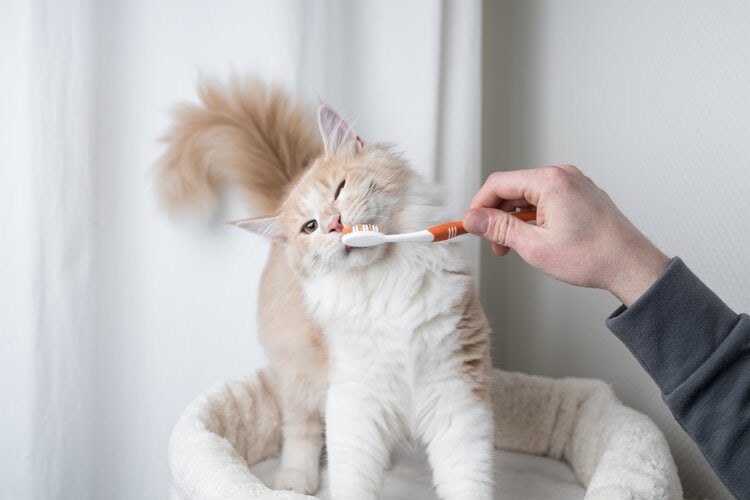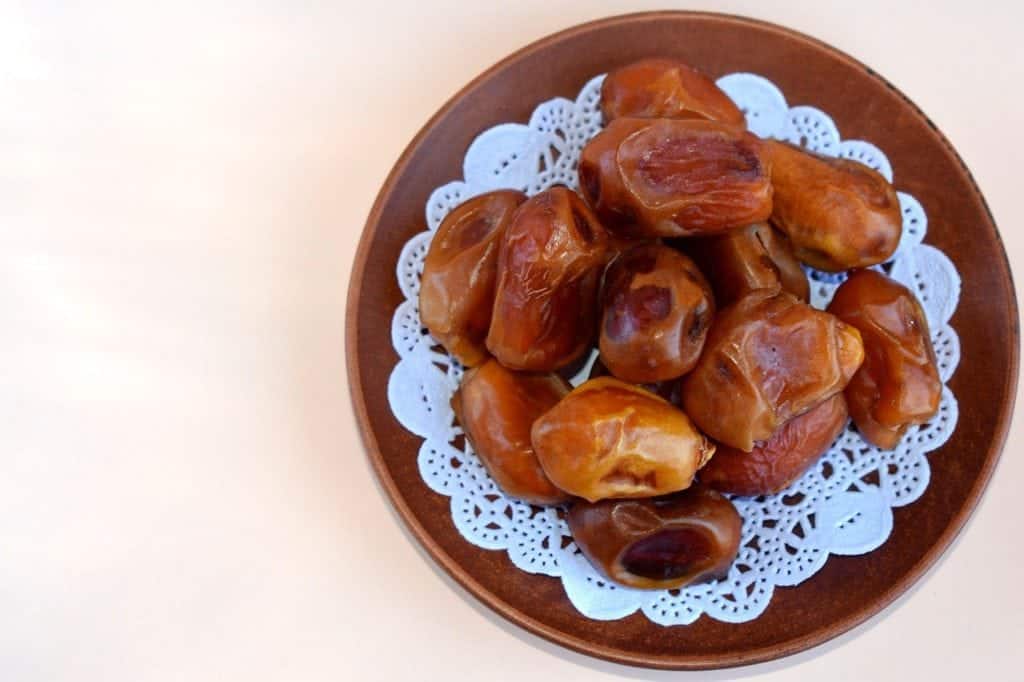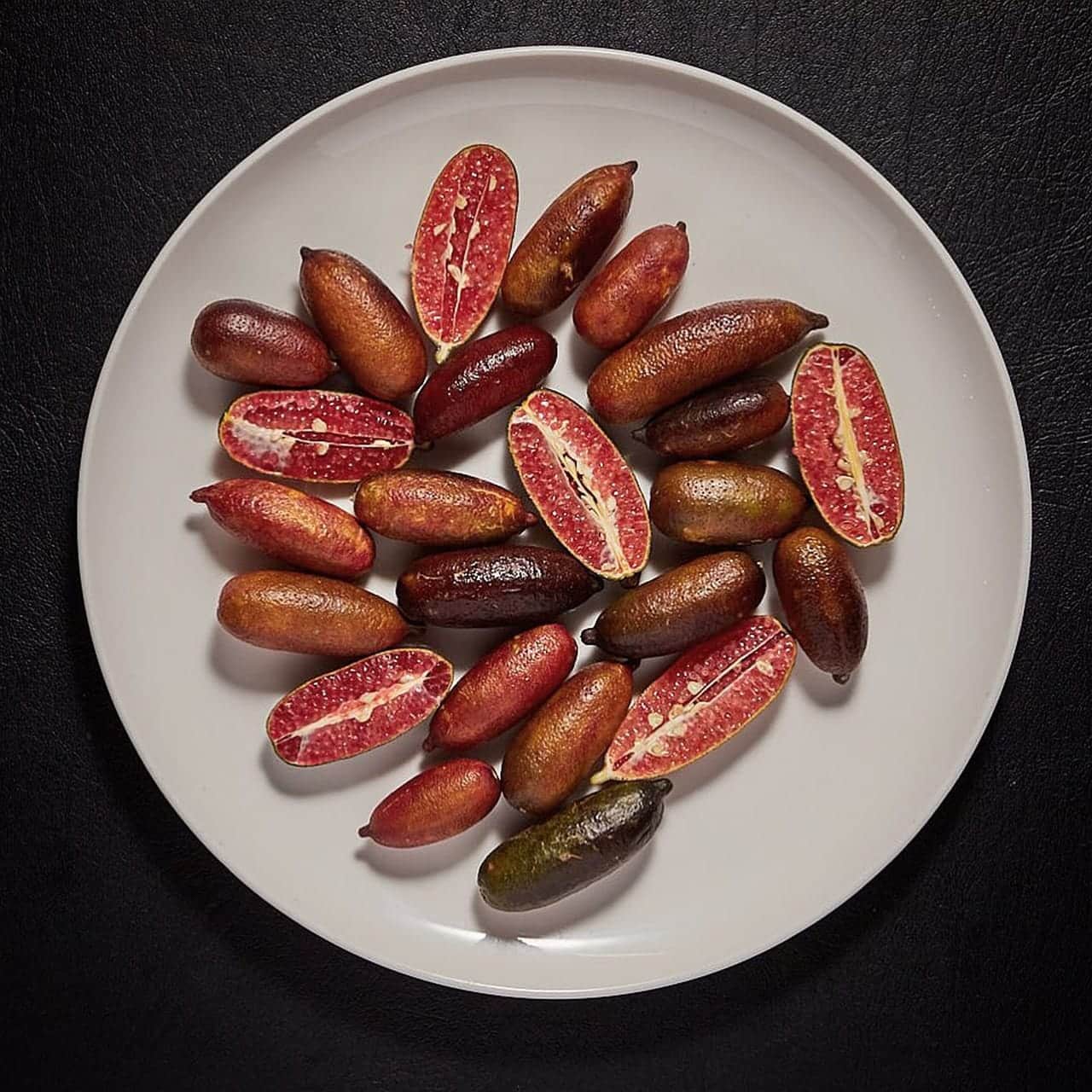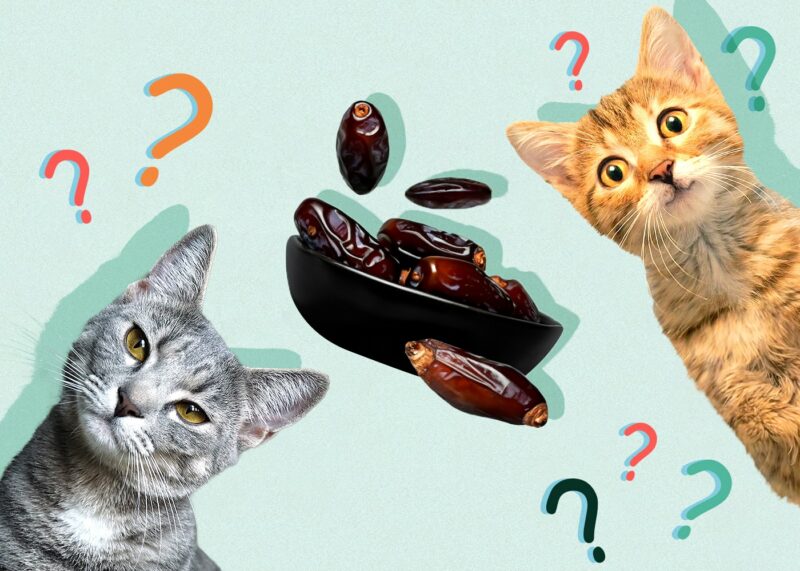Click to Skip Ahead
Can cats eat dates? The answer is not that simple. Although dates are not toxic for cats, meaning they can eat them, there are several health risks associated with this fruit when it comes to cats. We will go through these risks in our article.
To simplify, cats can eat dates, but it should never be part of their main diet or be given too frequently as a treat, and they will generally be better off without them. If you still choose to offer some to your cat, make sure to follow our guidelines so you can do this safely.
Dates, like most fruits, contain quite a high level of carbohydrates, which is not a good thing for your cats. This adds to your cat’s daily caloric intake.

Various Effects Dates Can Have on Cats
1. Laxative
Some foods may naturally accelerate the rate of bowel movements when consumed, and dates are an example. Cats’ digestive system is not wired to handle fruits and vegetables in such amounts. Dates may be a bit rougher on your kitty, and the effects may be more prolonged and profound.
Should you notice the cat passing loose stool or vomiting after nibbling some dates, the laxative properties are at play. Speak to your vet if your cat is not feeling well, has vomited more than twice, or is refusing their food and is suffering with a stomach upset, as they may require treatment.

2. High Sugar Content
Most of the fruits we consume always have a considerably high sugar level. This, combined with a high caloric intake and low activity levels, can potentially escalate overweight issues. If a cat eats too much sugary and calorie-rich foods, over time, this may predispose them to obesity, which then increases their risk for many health conditions, such as heart, urinary, and joint problems.
If you must give your cat dates, do not exceed one, and consult with your vet first before offering any at all, especially if your cat is on medication or a particular diet, or if they’re a diabetic.
3. Dental Concerns
Let’s resolve a common misconception. We are told from a young age that eating too much sugar will lead to tooth decay and cavities, and that’s correct! But the same does not apply to cats. Studies have shown that soluble carbohydrates, or sugar, do not contribute to plaque accumulation in cats. There are several risk factors associated with dental health in cats, such as breed, age, and general health, and regular oral hygiene and brushing are often essential in preventing plaque buildup.

4. Choking Hazard
Since dates are quite sticky, cats can easily choke on them. Dates, particularly the skin, may stick to your cat’s throat or gum as they try to swallow them. Having to perform first aid on a cat is no easy task and is a life-threatening emergency.
Also, dates contain a pit, which is a hard, stony substance in the middle that should neither be chewed or swallowed. The pit contains a very small amount of cyanide, unlikely to be significant, which is released when chewed into. If you’d like to offer your cat a small piece of date, only go for the flesh part and slice it up into small pieces after you have removed the skin and the pit.
If a cat accidentally swallows the pit, this may cause a blockage in their stomach and intestines, requiring endoscopy or surgery.
5. Calorie Count
Did you know that an average 10-pound (4.5-kilogram) cat only needs 180 to 200 calories daily? They should not go beyond 250. A high calorie count does not have any nutritional value to the body. You will be shocked to know how many calories they will have packed by just consuming one or two dates. Each piece contains approximately 66 k/cal, so it will be a significant daily amount.
If you must, ration the amount you give them and do it as a rare treat only, only if they do show an interest in eating it in the first place.

Do Cats Like Dates?
It would be absurd to assume that they did. Normally, a cat’s tongue will not have receptors that can pick up sweet tastes and distinguish them from others. Even if they eat dates, they will not tell the difference.
Therefore, we can presume that cats cannot crave dates out of their own volition. If you were thinking of giving it as a snack, you should forget about it altogether because your furry friend cannot taste sweet things and there are better and healthier alternatives.
Regarding Kittens
The first thing would be to note that kittens have a more sensitive and developing digestive system than grown-up cats. What adult cats may tolerate, kittens may not. Up to this point, we have already seen that dates are not recommended for cats because of the health risks they pose. It follows that kittens should not eat dates.
It is advisable to use balanced and nutritious kitten food that can be digested with ease to help kittens transition from feeding on their mom’s milk instead of introducing them to dates.
What if Your Cat/Kitten Already Consumed Dates?
Such a case does not necessarily call for panic mode. We have seen that each cat can react differently to certain foods. Maybe yours will not show any side effects at the end of the day. However, if your cat has eaten more than one date or has swallowed the pit, give your vet a call.
They may recommend you closely monitor the cat for next few days, and if there is any abdominal pain, nausea, drooling, vomiting, reduced appetite, diarrhea, or they do not seem quite right, get back in touch with the vet, as they will need to check them over.

Best Alternatives
If you are dying to introduce your cat to some new snacks, at least go for those that are more appropriate for their digestive tract and will pose no health issues. The best alternatives would be tasty meaty treats, like boiled chicken or fish, without any bones, commercial cat treats based on animal protein, or other safe fruit and veggie options.
Conclusion
The key takeaway would be that dates are non-toxic. However, that comes with a caveat to the effects dates may have on your cat and why they should be offered as a very small and rare treat. The reasons for taking such measures have been comprehensively discussed above, and they include health risks that may result from high-calorie counts, high sugar levels, and even the possible risk of choking.
You can always go for better snack alternatives if you want your cat to enjoy something special. Otherwise, always keep the number of dates to less than one. Giving them dates may present problems in several areas, mostly digestive and excess calorie intake, and your cat will not reap any significant benefits from eating this fruit.












